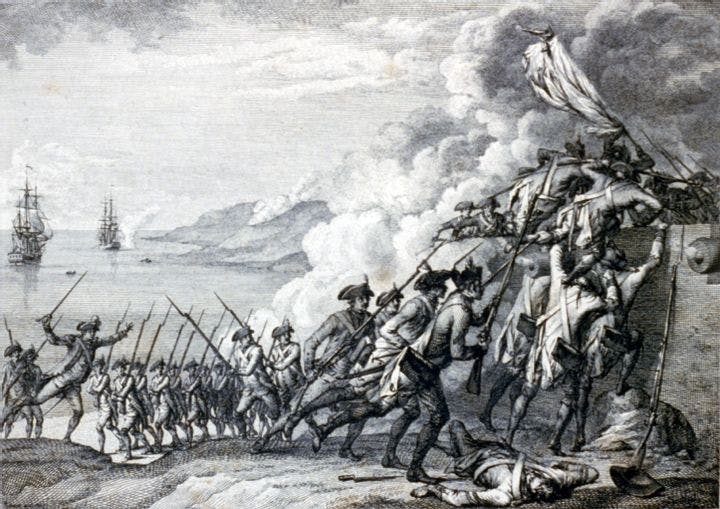Fall 2011
The Grim Dawn of the Republic
– The Wilson Quarterly
From 1774 to 1800, the U.S. experienced a decline almost as steep as the Great Depression.
By 1840, the United States was a member of the club of prosperous nations, enjoying strong growth rates that outshone even Great Britain’s. But the country’s phenomenal performance masked an economic calamity that had shaken it only a few decades earlier, a period that may have been one of America’s darkest financial hours. From 1774 to 1800, say economists Peter H. Lindert of the University of California, Davis, and Jeffrey G. Williamson of Harvard, the United States experienced “a decline almost as steep as during the Great Depression . . . and certainly longer.”
The colonists were already better off than the British in many ways before the Revolution, and Lindert and Williamson’s analysis shows that they were even wealthier than previously thought. The society the British seeded had turned out to be strikingly egalitarian, and, apart from the top two percent of income earners, colonists earned more than their British counterparts. The South was especially flush, with per capita income double that of New England, even when slaves were counted as part of the population.
During the Revolutionary War, combat and the British occupation of key cities destroyed industries and infrastructure, while inflation wreaked havoc on the weak financial system. Overseas trade was disrupted, and Americans were shut out of lucrative British markets. Well-educated Loyalists decamped for the mother country or for Canada, taking their skills with them.
White-collar workers made up 13 percent of the American labor force before the Revolution, but only eight percent in 1800. The South suffered a particularly harsh reversal of fortune. The war reduced the upper South’s exports of rice, tobacco, and other commodities by 39 percent and the lower South’s by 50 percent.
All told, American incomes dropped by 22 to 28 percent between 1774 and 1800, Lindert and Williamson estimate. When the decline ended is not entirely clear; some economists believe that incomes began to grow again in the 1790s. If that is the case, say Lindert and Williamson, the period immediately following the Revolution may have seen a fall even more rapid than their calculations show, constituting “America’s greatest income slump ever.”
The North rebounded from the catastrophe quickly, posting 2.1 percent annual growth in per capita income between 1800 and 1840, largely on the strength of its industrial output. The South took much longer to recover; by 1840, the region’s personal income per capita still had not reached prewar levels. The country’s overall growth rate of 1.26 percent during that period put it solidly in the camp of modern economies, defined as those growing by at least one percent annually. “Without the 1774–90 economic disaster,” Lindert and Williamson write, “it appears that America might well have recorded a modern economic growth performance even earlier, [becoming] perhaps the first [country] on the planet to do so.”
THE SOURCE: “America’s Revolution: Economic Disaster, Development, and Equality” by Peter H. Lindert and Jeffrey G. Williamson, in Vox EU (voxeu.org), July 15, 2011.
Photo courtesy of the United States Library of Congress
